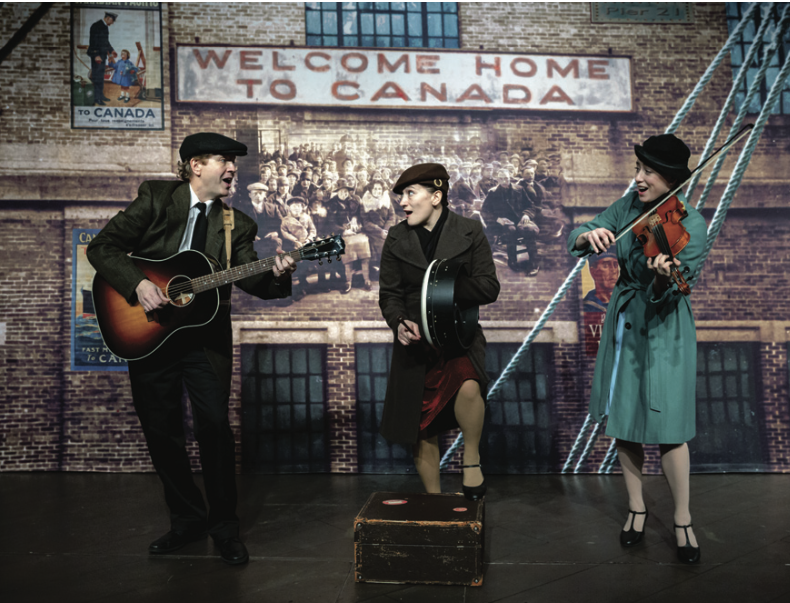Pier 21 Musical Performance

Last week students got to see the Pier 21 Musical, which reviewed the history of immigration during World War 2. It was a rich heartfelt musical featuring celtic and swing music. Students got to experience the adventures, heartaches and hopes of refugees, immigrants, orphans, and war brides, as they came through the gateway to Canada to make a new life in a new land. They also learned how Canadian soldiers left the Pier to free Europe from Nazi bullies, and entertained soldiers on CBC radio. The play was broken down into three parts:
PART ONE Summer 1939 Arriving at the Pier
The Immigration Officer Immigrants, Refugees, Home Children
PART TWO Canada at War A Soldier departs Canadian Women Army Corps The Army Show
Letter from Holland
PART THREE Post war War Brides
Red Cross and Sisters of Service The Fallen and the Free
The Return
Background Knowledge
PIER 21, located in Halifax on the Eastern edge of Canada, was a place of dramatic comings and goings: risky arrivals and bold departures, culture and language challenges, farewells and reunions, disappointment, heartache, and tearful relief. This old warehouse profoundly shaped what Canada became dur- ing the decades it was in operation.
Steamships, docking at the Pier, brought over a million immigrants hoping to settle in Canada. Among the immigrants were refugees, home children, and War-brides who made their first steps down a ramp into the drafty warehouse that was Pier 21. As luggage and trunks were unloaded, hundreds of people milled about or waited on benches. They were greeted by Immigration officers, volunteer organizations, nurses and aid societies, and long missed relatives.
Our play begins at the outbreak of World War 2 just as Canada is about to join England in the war effort. People are fleeing Europe to escape the coming dan- gers. With the fate of the world hanging in the balance, Nazi U-boats (subma- rines) prowl outside the Halifax harbour as half a million soldiers sail away from the Pier to fight the Nazi scourge in Europe. For some Canadian soldiers, the Pier was the last place in Canada they would set foot on.
Were it not for the selfless actions of valiant soldiers, compassionate volunteers, or staff and military personnel working under extreme conditions, the experience of immigrants, refugees, and displaced people arriving in Halifax would have been a memory rather forgotten. Instead, as the Pier 21 museum amply attests to, there is an overwhelming level of gratitude for the gifts Canadians gave to storm-tossed souls reaching for a promising future.